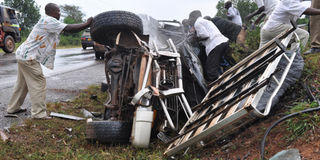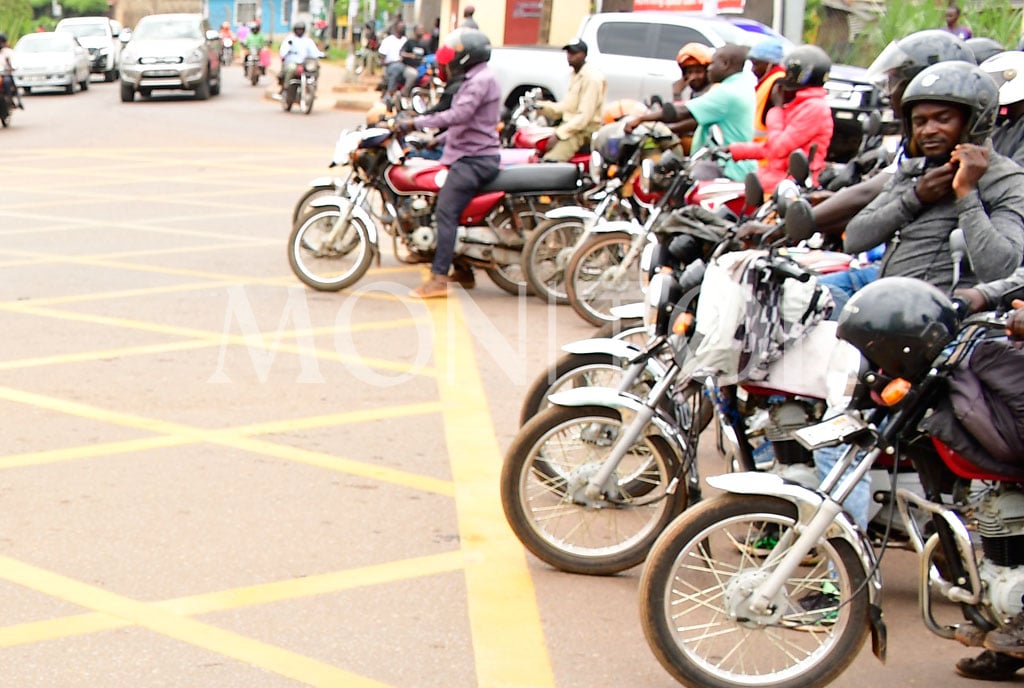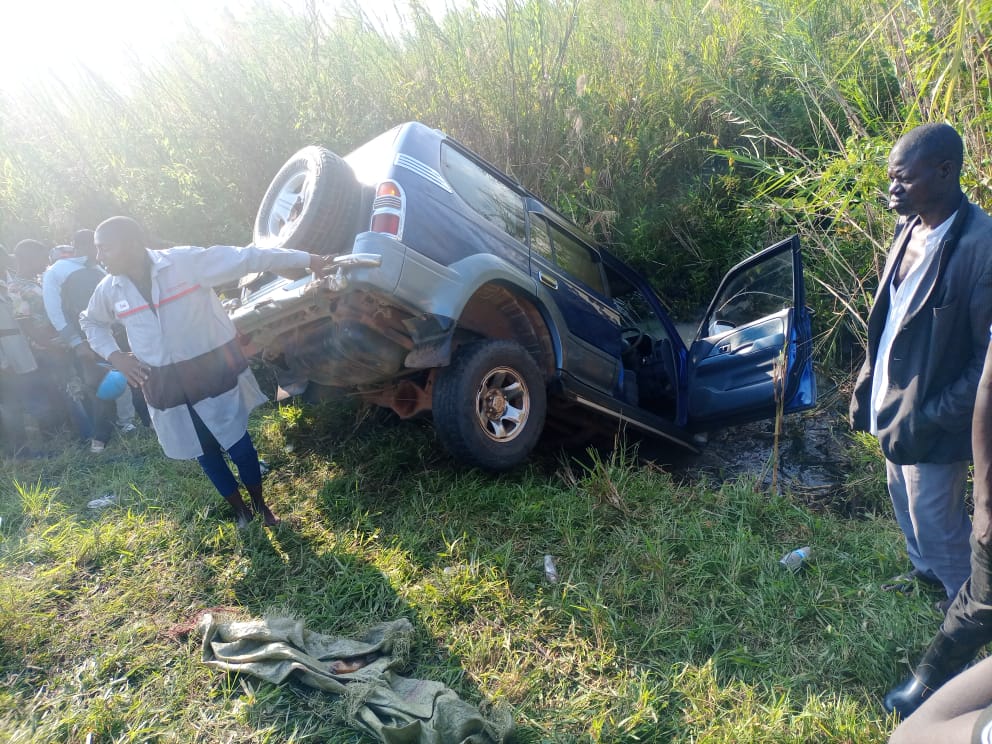Why funding is vital in promoting road safety

What you need to know:
Without secure and stable funding, it is hard to sustain the policies required to achieve lasting reductions in casualty levels
Much as there has been effort by the Kampala Capital City Authority (KCCA) to fix roads within the city and its suburbs, many remain unsafe for road users. For instance, the Bukoto-Kisaasi Road that is approximately three kilometres from the Bukoto to Kisaasi roundabout, is narrow and can only accommodate two lanes.
During rush hour, a third lane is created by reckless motorists, which makes the road unsafe, especially for pedestrians who have to negotiate between cars and open drains on either side of the road. Covering the drains with raised concrete slabs would provide a space for pedestrians (a road user category that is vulnerable to road crash deaths) to walk.
Ideally, a standard zebra crossing should not to be at the same level as the road. It should protrude some inches above the road surface, with speed controlling rumble strips built before approaching the zebra crossing. Unfortunately, most crossings in Kampala and on most highways are just painted. When it rains, the paint is washed away, making the crossings non-existent. School zones such as Lugogo bypass with Kololo Secondary School and City High School, among others, have no gazetted and protected walkways for students who are left at the mercy of speeding motorists and motorcyclists.
Also, Jinja Road junction at Kitgum House is a traffic conflict spot, where, quite often, motorcyclists are knocked by motorists. In addition to traffic lights and traffic officers at the spot, a junction box, similar to that at Parliament Avenue, Kira Road traffic lights and Bukoto traffic lights could come in handy and help control traffic flow and prevent crashes. Because of poor funding, there is no road maintenance, especially putting up of road markings and sign posts, all of which affect proper road usage.
While receiving the global plan for the second United Nations Decade of Action for Road Safety 2021-2030 on October 28, 2021 at the ministry headquarters in Kampala, the minister for Works and Transport, Gen Edward Katumba Wamala, noted with concern the fact that road safety is considered a consumptive expenditure during the budgeting process.
“As long as road safety money is treated as consumptive, we shall lose more people. If it means looking for ways of sourcing for funding and support for the road safety campaign, let us do that because it is something we must do,” Katumba said.
Katumba’s outcry comes at a time when his ministry’s road safety activities were allocated a meagre Shs2 billion for the new financial year, yet he says mass media campaigns alone, a component of road safety, requires Shs5 billion.
The required funding
For the government to significantly reduce the number of road crashes, Katumba says, it requires between Shs10 billion to Shs30 billion per financial year. This would address issues of road safety management such as periodic and mandatory vehicle inspection, mass media campaigns such as caravans across all regions, public awareness among all categories of road users, post-crash responses and printing of road safety materials such as the Traffic and Road Safety Act, the Roads Act and the Highway Code in different local languages. This would help the ministry to reach out to the public and through such campaigns encourage a road safety mindset change, among other cross cutting issues.
“Through repeated sensitisation, we need to remind drivers of their responsibilities and consequences of their actions on the road. We need to send messages that may be scary but keep people alive so that a driver knows that if they are driving to Masaka, for example, they must be aware of the black spots and drive cautiously,” Katumba explains.
“We scramble within the available meagre budget. Sometimes we solicit for small funds and then apply it where it is necessary. If you need Shs30 billion for a financial year and you only get Shs600m and this is spent in one day, then you are left with nothing. For example, to run a road safety caravan from Kampala to Mbarara City (including playing road safety messages and other sensitisation campaigns) will not cost less than Shs300m,” he adds.
The burden
According to the Uganda Bureau of Statistics (UBOS) 2017/2018 statistical abstract, Uganda loses approximately $1.2 billion, which is approximately Shs5 trillion due to road crashes annually, representing five percent of the country’s Gross Domestic Product.
“To avert this loss, the government needs to invest in road safety. The biggest percentage of public and private transportation of people and cargo is by road. It is also key for attracting investors in all sectors. If it is not reliable and is a risk for investment, then investors will be deterred from investing,” says Peter Tibigambwa, the chief executive officer, Safe Way Right Way Uganda.
From a road construction perspective, 85 percent of the government’s budget is allocated to road network development and 15 percent goes into overheads and administrative issues. Katumba is worried that road safety does not feature anywhere. This, to him, means doing things the same way and expecting different results yet improved roads and road crashes go hand-in-hand.
The more roads constructed, the more crashes likely to be registered because improved roads attract speed, which is one of the main risk factors. Worse still is that the money collected from issuing of express penalty scheme tickets goes to police as a whole, yet it should specifically be directed to the traffic directorate to address road safety challenges.
According to a source within the Ministry of Works and Transport who prefers anonymity, the funding for road safety is released quarterly. Even then, it is sometimes a drop in the ocean to what is budgeted for. The source also reveals that for the last 15 years, the ministry has not had a budget for road safety.
“There are times a road crash happens and there is no money to travel to the scene to write a crash scene report to inform stakeholders about the next course of action. It is how bad the situation is,” the source says.
The number of people Uganda loses per day increased from 10 to 12 per day from January to May 2022, according to previous Uganda traffic police monthly reports. Katumba says most of the road crashes, for instance the recent one on Kyenjoyo-Fort Portal Road involving a Link bus that claimed 22 lives, and the one on Nakalama-Tirinyi-Mbale road could have been prevented with sensitisation messages through mass media campaigns and public sensitisation about road safety.
Statistics
According to the 2021 Uganda Police annual crime report, there was a 42 percent increase in the number of crashes from 12,249 in 2020 to 17,443 in 2021. During the period, 3,757 crashes were fatal, and 4.616 were minor.
There were 18,305 casualties from crashes in 2021, a reduction of 11 percent. Persons killed reduced by six percent while persons seriously injured reduced by 13 percent and those that sustained minor injuries reduced by 17 percent.




